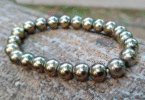You might think that your collection of luxury watches enjoys protection through your home insurance. Whether you purchased homeowners or renters insurance, however, your fine jewelry only receives $1,500 of protection. That’s the cap for home insurance regardless of how many perils your policy covers. The typical home policy does not cover the cost of a Phillipe Aquanaut or a Cartier watch. The insurance industry offers three options for insuring your jewelry through – a jewelry rider or floater added to your home insurance policy or a separate jewelry policy.
Jewelry Rider for Your Home Insurance
Add a jewelry rider to a home policy for just a few dollars, which adds a few thousand dollars to your coverage. Essentially, getting a jewelry rider brings your limit up to a max of $5,000 total for your jewelry. Keep in mind that you’ll need to pay a deductible and that this $5,000 figure applies to your jewelry as a whole, not to individual pieces.
Jewelry Floater for Your Home Insurance
For a better choice for your Rolex watch men’s edition or other luxury watches, add a personal articles floater to your home insurance. This insurance supplement adds to your home policy coverage for jewelry and other luxury items that you itemize. The floater costs more than the rider, but you can fully cover each item that you add to the list. Your list includes the name and description of each item, typically supplemented with a photo of each item and its declared value. Declare an accurate value for each piece because that’s the amount you’ll get if something happens to it, such as theft. Undervaluing the items to save money on premiums can cost you if you ever need to file a claim. Most insurance companies require a professional appraisal for each piece of jewelry.
Your insurance company also makes a list of the perils for which each piece of jewelry receives coverage. For example, if your home insurance does not cover flood damage, your jewelry floater would not either. Most floaters do cover accidental loss, such as if your ring slips off while scuba diving, snorkeling, or doing the dishes. This coverage includes losing the ring or watch on vacation. Like a rider, you pay a deductible.
Purchase a Stand-alone Jewelry Insurance Policy
Although this costs the most, jewelry insurance doesn’t cost an exorbitant amount. Typically, you pay 1-2% of the piece’s value, so if you purchased a $10,000 watch, you’d spend around $100 per year to insure it against loss. Purchasing jewelry insurance sometimes requires you to go outside of your regular insurance company. Not every company offers this type of insurance.
You purchase jewelry insurance separately from your home insurance, which helps you keep your home insurance rates lower. That’s because any claim you need to file for loss of jewelry goes on the jewelry policy and not the home policy. A stand-alone policy usually covers your jewelry and watches from the full range of perils, including accidental loss, mysterious loss, and theft. You can also file a claim if you lose part of a set, such as a bracelet that came with a necklace or one earring.
Perhaps the most appealing aspect of jewelry policies comes from their lack of deductible. If you do need to file a claim, you won’t pay a dime to obtain compensation for your lost or damaged jewelry or watch. You can add a deductible to help you save money on premiums, but most companies offer zero-deductible policies. Some companies offer policies that cover items for up to 125% of the appraised value. Policies still include policy limits. Some policies limit compensation to $25,000 per piece of jewelry with a maximum of $50,000.
To cover watches that cost more than $160,000, purchase a scheduled coverage policy. Each piece covered under a scheduled policy must undergo a professional appraisal. Many of these stand-alone policies cover wear-and-tear damage, such as a chipped stone or broken setting or clasp. Some policies may even let you take the jewelry to your own jeweler, but others designate the jewelry you must take the watch or other piece of jewelry to for repairs.
Source: Shutterstock.com/H_Ko
What These Policies Require
Although you purchase a policy for peace of mind, the insurance company expects you to do all that you can to avoid damage to or theft of the watch collection or other insured pieces. This means you need to keep your valuables secure when you’re not wearing them.
The insurance company will also expect that you protect these luxury items from high humidity and liquids that can damage them, as well as store them in temperature-safe secured locations that aren’t in direct sunlight. Because your collection of watches may fetch a higher price than one watch alone, most insurance companies will require a professional appraisal of the collection as a whole. You will need to provide this in addition to the separate appraisal for each piece.
Do You Need a Rider, Floater, or Policy?
The size and value of your collection decide whether you need a home insurance rider, a floater, or a stand-alone policy. Starting with a smaller collection and transitioning to a larger one, for example, might mean that you need to change your policy. Make sure to keep the value of your watches in mind as you shop for coverage.


